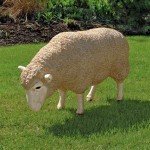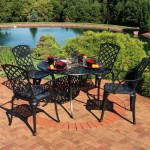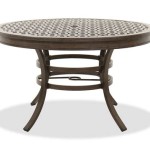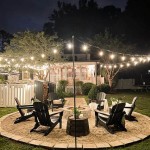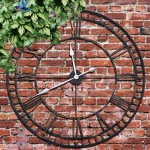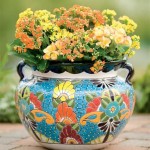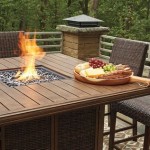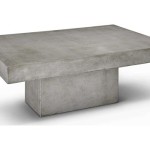Materials for Outdoor Table Tops: A Comprehensive Guide
Choosing the right material for your outdoor table top is an important decision that will affect its durability, aesthetics, and overall lifespan. With a wide array of options available, it's crucial to understand the pros and cons of each to make an informed choice that aligns with your needs and preferences. This guide explores some common materials used for outdoor table tops, their unique characteristics, and factors to consider when making your selection.
Wood
Wood is a classic and popular choice for outdoor table tops, offering a natural warmth and beauty that blends seamlessly with various outdoor settings. However, wood requires regular maintenance to withstand the elements. Different types of wood have varying levels of durability and resistance to weather damage. Here are some popular options:
- Teak: Known for its exceptional durability, water resistance, and natural oils that protect it from decay, teak is an excellent choice for outdoor furniture. However, it is expensive.
- Cedar: This aromatic wood is naturally resistant to decay and insects. Cedar is a more budget-friendly alternative to teak and offers a warm, rustic aesthetic.
- Ipe: Ipe is incredibly hard and dense, making it highly resistant to scratches, dents, and weathering. It's known for its rich reddish-brown hue and longevity.
- Hardwood: A variety of hardwoods, such as oak, maple, and mahogany, are suitable for outdoor use when properly sealed and treated. They offer a classic look and are relatively durable but require regular maintenance.
Metal
Metal tabletops offer a modern and sleek look while providing excellent durability. Different metals have distinct properties and aesthetics. Here are some popular options:
- Aluminum: Lightweight, rust-resistant, and affordable, aluminum is a versatile material for outdoor tables. It's easy to clean and available in various finishes.
- Steel: Steel is strong and durable, offering a classic industrial look. However, it can rust if not properly treated. Galvanized or powder-coated steel provides better rust resistance.
- Wrought Iron: Known for its intricate designs and durability, wrought iron is a classic choice for outdoor tables. It can be expensive and susceptible to rust if not well-maintained.
Synthetic Materials
Synthetic materials are engineered to withstand harsh outdoor conditions with minimal maintenance. They offer various looks and styles, simulating natural materials like wood or stone.
- Polywood: A durable and weather-resistant composite material made from recycled plastic, Polywood is easy to clean and maintain. It comes in a wide range of colors and textures, often replicating the look of natural wood.
- High-Density Polyethylene (HDPE): Often used for outdoor dining tables, HDPE is lightweight, durable, and can withstand extreme temperatures.
- Resin: Resin tabletops are available in various patterns and colors to suit different styles. They are lightweight, easy to clean, and resistant to stains and fading.
Stone
Stone provides a timeless and luxurious aesthetic for outdoor tables. It's naturally durable and resistant to weather damage. Popular stone options include:
- Granite: Highly durable, scratch-resistant, and heat-resistant, granite is an excellent choice for outdoor tables. It comes in a wide range of colors and patterns.
- Marble: Known for its elegance and distinctive veining, marble adds a touch of sophistication. However, it's more susceptible to staining and etching than granite.
- Slate: Slate is a natural stone with a unique, layered appearance and a rough texture. It's durable, weather-resistant, and comes in various shades of gray and black.
- Travertine: A porous stone with a warm, earthy appearance, travertine adds a natural touch to outdoor tables. It requires sealing to resist staining and water absorption.
Glass
Glass tabletops offer a modern and minimalist aesthetic. They are easy to clean and can be customized with different colors, textures, and thicknesses. Tempered glass is recommended for outdoor use to enhance its durability and resistance to breakage.
Factors to Consider
When choosing a material for your outdoor table top, consider these factors:
- Durability: The material should be able to withstand the elements, including rain, snow, sun, and temperature fluctuations.
- Maintenance: Some materials require more maintenance than others. Consider how much time and effort you are willing to invest in upkeep.
- Aesthetics: Choose a material that complements your outdoor space and personal style.
- Budget: Material costs can vary significantly. Determine your budget before making a selection.
- Usage: Consider how you plan to use the table. If it's for casual dining, a less expensive material might suffice. However, if you plan to entertain frequently, you may want to invest in a more durable and high-quality material.

Budget Friendly Diy 8 Foot Outdoor Table Simply Home

Pin By Stephanie Goddard On Projects To Try Outdoor Table Tops Dining Diy Patio

Best Materials For Outdoor Furniture

Extra Durable Hpl Outdoor Restaurant Table Tops Bistro Tables Bases

Waterproof Outdoor Dining Table Tops Hpl Buy Compact Laminate Products On Jiangsu Jiashida Decorative Material Co Ltd

Diy Boho Patio Side Table Makeover Little Vintage Cottage

180cm Round Maximus Teak Table 4cm Top

Outdoor Dining Table Seating Capacity 8 Top Material Solid Wood Walmart Com

Tabletop Outdoors Go In

Outdoor Table Tops Tables
See Also

